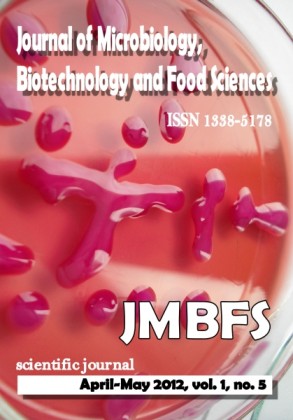MINIMUM INHIBITORY AND BACTERICIDAL CONCENTRATIONS OF THEAFLAVIN AND SYNGERGISTIC COMBINATIONS WITH EPICATECHIN AND QUERCETIN AGAINST CLINICAL ISOLATES OF STENOTROPHOMONAS MALTOPHILIA
Keywords:
Resistance, synergy, antibacterial, polyphenol, theaflavin, epicatechin, quercetinAbstract
Stenotrophomonas maltophilia is an important nosocomial pathogen with intrinsic resistance to multiple antibiotics. Previous investigations have shown flavanols from black tea to possess antibacterial activity. This study describes the determination of minimum inhibitory concentrations and minimum bactericidal concentration for theaflavin independently and in formulations with the polyphenols epicatechin and quercetin against nine clinical isolates of Stenotrophomonas maltophilia and the control isolate NCTC 130141 via the microtitre assay. The results demonstrate that theaflavin has strong antibacterial activity and also shows significant synergism with epicatechin and quercetin. The minimum inhibitory concentrations of the isolates range between 200-400 ïg/mL for theaflavin and 100-200 ïg/mL for both theaflavin:epicatechin and theaflavin:quercetin combinations. The minimum bactericidal concentrations were discovered to be a 2 fold increase on those of the minimum inhibitory concentrations. The research highlights the potential use of polyphenols for the clinical treatment of highly antibiotic resistant bacteriaDownloads
Download data is not yet available.
Downloads
Published
2012-04-01
How to Cite
Betts, J., Murphy, C., & Kelly and Haswell, S. (2012). MINIMUM INHIBITORY AND BACTERICIDAL CONCENTRATIONS OF THEAFLAVIN AND SYNGERGISTIC COMBINATIONS WITH EPICATECHIN AND QUERCETIN AGAINST CLINICAL ISOLATES OF STENOTROPHOMONAS MALTOPHILIA. Journal of Microbiology, Biotechnology and Food Sciences, 1(5), 1250–1258. Retrieved from https://office2.jmbfs.org/index.php/JMBFS/article/view/7234
Issue
Section
Microbiology
License
Copyright (c) 2012 Jonathan Betts, Christine Murphy, Stephen Kelly and Haswell

This work is licensed under a Creative Commons Attribution 4.0 International License.
All papers published in the Journal of Microbiology, Biotechnology and Food Sciences are published under a CC-BY licence (CC-BY 4.0). Published materials can be shared (copy and redistribute the material in any medium or format) and adapted (remix, transform, and build upon the material for any purpose, even commercially) with specifying the author(s).

